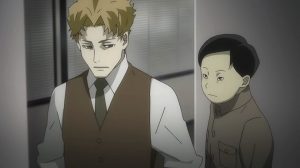 I hate to open with the same line in two consecutive posts, but tonal contrast is really what this double episode – and Baccano!, to an extent – is all about for me. When you factor in not just how much the tone shifts within an episode but just how different these two eps are, it’s remarkable. Then consider that Oomori Takahiro is a director best known for Natsume Yuujinchou. The mark of the really great TV anime directors, to me, is to be able to work in any genre with equal brilliance – and there’s never been any question in my mind that Takahiro-sensei was one of the greats. He was a major reason why Brain’s Base was my favorite studio for a long time.
I hate to open with the same line in two consecutive posts, but tonal contrast is really what this double episode – and Baccano!, to an extent – is all about for me. When you factor in not just how much the tone shifts within an episode but just how different these two eps are, it’s remarkable. Then consider that Oomori Takahiro is a director best known for Natsume Yuujinchou. The mark of the really great TV anime directors, to me, is to be able to work in any genre with equal brilliance – and there’s never been any question in my mind that Takahiro-sensei was one of the greats. He was a major reason why Brain’s Base was my favorite studio for a long time.
 Episode 6 is pretty close to an archetypical Baccano episode in most ways. It’s that classic runaway train narrative style, the setting being the perfect metaphor for the story. There are certainly supernatural elements at play here, but this is mostly a “mundane” chronicle of savagery and mindless violence among the Mafia and Camorra. In prohibition America these guys were pretty close to omnipotent, which naturally meant that their major opposition – and only checks and balances – were each other.
Episode 6 is pretty close to an archetypical Baccano episode in most ways. It’s that classic runaway train narrative style, the setting being the perfect metaphor for the story. There are certainly supernatural elements at play here, but this is mostly a “mundane” chronicle of savagery and mindless violence among the Mafia and Camorra. In prohibition America these guys were pretty close to omnipotent, which naturally meant that their major opposition – and only checks and balances – were each other.
 A major highlight of this episode is Ladd saying “Fuck You!” in English (it’s so bittersweet to hear the fun Fujiwara Keiji is having with this role), though Ladd is ow-key by his standards in this one – none of the gallons of spilled blood is due to him. Dallas Genoard’s role in all this becomes clear – he became Szilard Quates’ guinea pig for Barnes’ elixir (which seems to work). There’s an irony in so many people being so obsessed with finding a lowlife hoodlum of very little substance – all for different reasons.
A major highlight of this episode is Ladd saying “Fuck You!” in English (it’s so bittersweet to hear the fun Fujiwara Keiji is having with this role), though Ladd is ow-key by his standards in this one – none of the gallons of spilled blood is due to him. Dallas Genoard’s role in all this becomes clear – he became Szilard Quates’ guinea pig for Barnes’ elixir (which seems to work). There’s an irony in so many people being so obsessed with finding a lowlife hoodlum of very little substance – all for different reasons.
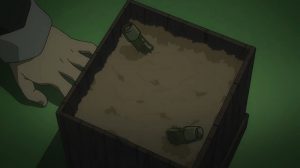 Episode 7 is the game changer, and for my money arguably the best of the series. After a series of short timeskips we take a real jump this time – to 1711, on-board a sailing ship. There are some familiar faces there – Quates, Maiza, Czeslaw – and a lot we haven’t seen before. This is the genesis story of Baccano, the wellspring of the immortality MacGuffin. And it all comes to alchemy, with Maiza being the man at the center of it all. We don’t know exactly how all of these people came to be together on this ship, though some (including Maiza’s younger brother Gretto ) are clearly part of Maiza’s alchemic order, but Quates is ironically in the position of resident skeptic. That ends soon enough, in dramatic fashion.
Episode 7 is the game changer, and for my money arguably the best of the series. After a series of short timeskips we take a real jump this time – to 1711, on-board a sailing ship. There are some familiar faces there – Quates, Maiza, Czeslaw – and a lot we haven’t seen before. This is the genesis story of Baccano, the wellspring of the immortality MacGuffin. And it all comes to alchemy, with Maiza being the man at the center of it all. We don’t know exactly how all of these people came to be together on this ship, though some (including Maiza’s younger brother Gretto ) are clearly part of Maiza’s alchemic order, but Quates is ironically in the position of resident skeptic. That ends soon enough, in dramatic fashion.
 It’s probably best that Narita and Oomori don’t fill in too many details – a good horror story needs to retain an air of mystery. Who the devil Maiza summons is we don’t know exactly (ma ii, he may just turn up later), but he definitely gives Maiza the knowledge on how to make the “Grand Panacea”. Everyone drinks, but that’s the easy part. Only Maiza is granted the knowledge on how to make it, and this sets off an immediate conflict with Quates (it would have been someone else soon enough). Maiza contends that the knowledge is too dangerous to share, and most of the passengers support him. But he eventually gives the knowledge to Gretto, unwittingly sealing his fate in the process and setting off the chain of events leading to the present (well, 1931).
It’s probably best that Narita and Oomori don’t fill in too many details – a good horror story needs to retain an air of mystery. Who the devil Maiza summons is we don’t know exactly (ma ii, he may just turn up later), but he definitely gives Maiza the knowledge on how to make the “Grand Panacea”. Everyone drinks, but that’s the easy part. Only Maiza is granted the knowledge on how to make it, and this sets off an immediate conflict with Quates (it would have been someone else soon enough). Maiza contends that the knowledge is too dangerous to share, and most of the passengers support him. But he eventually gives the knowledge to Gretto, unwittingly sealing his fate in the process and setting off the chain of events leading to the present (well, 1931).
 There’s a major wildcard in all this – Huey Laforet, also on-board ship, and someone we know is alive in the present even if we’ve never seen his face. He’s the only one besides Maiza that we see the devil speak to directly, and he clearly brings a different sensibility to all this than the others do. It’s a fascinating way to set up the rest of the story, and beautifully executed. The atmospherics and writing of this episode are off the charts, and it represents one of the finest uses of exposition by flashback I’ve seen in anime.
There’s a major wildcard in all this – Huey Laforet, also on-board ship, and someone we know is alive in the present even if we’ve never seen his face. He’s the only one besides Maiza that we see the devil speak to directly, and he clearly brings a different sensibility to all this than the others do. It’s a fascinating way to set up the rest of the story, and beautifully executed. The atmospherics and writing of this episode are off the charts, and it represents one of the finest uses of exposition by flashback I’ve seen in anime.


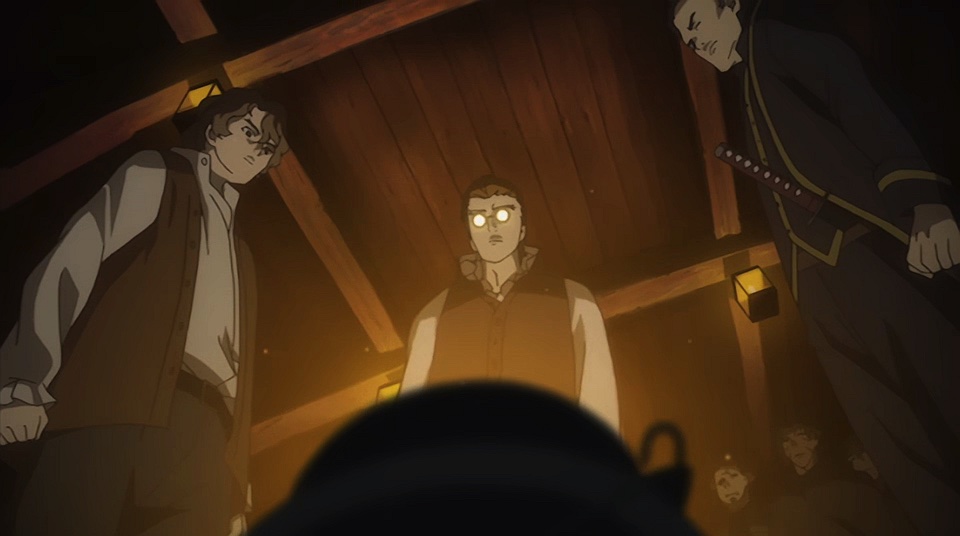
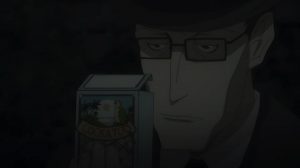
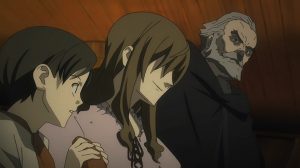
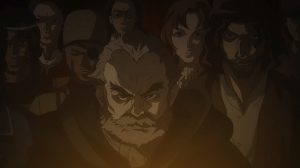
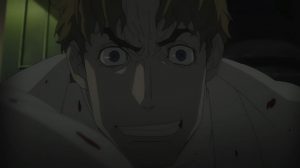
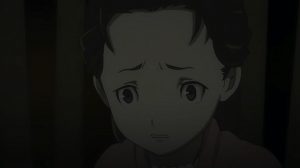
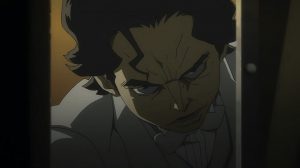



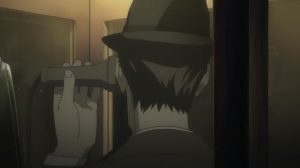
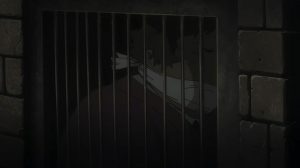

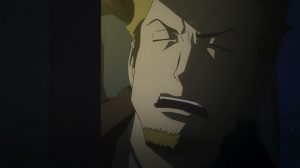


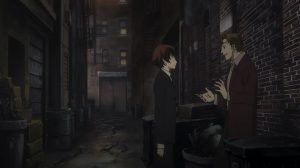
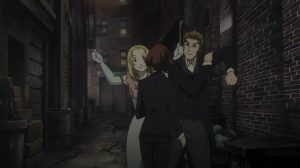
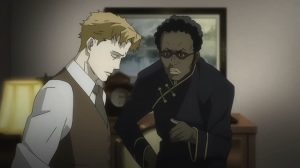
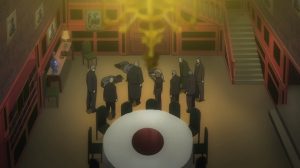
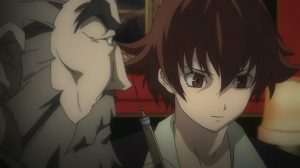
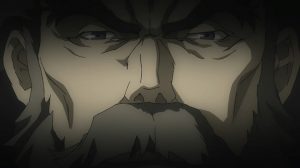
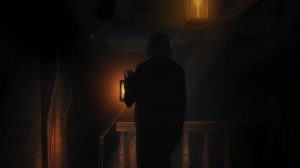

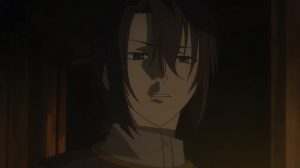
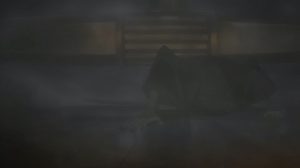
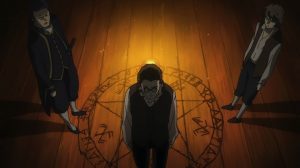
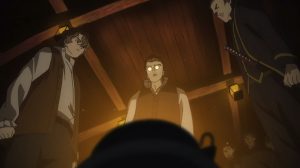
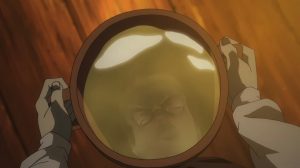
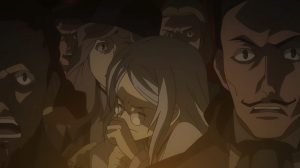
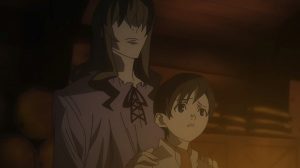
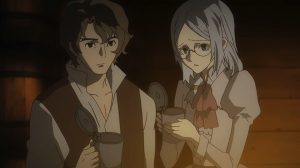
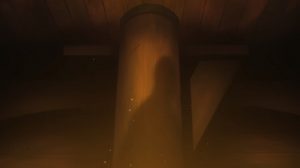
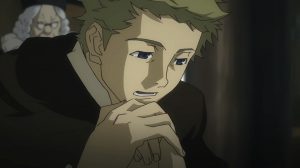


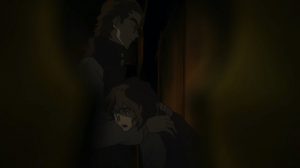
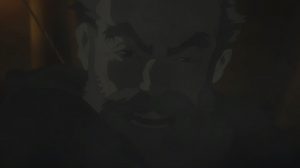


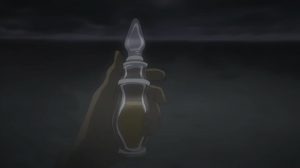
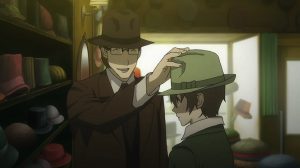
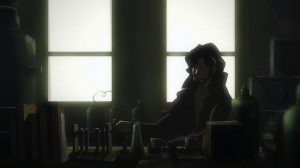


Yukie
May 20, 2020 at 9:35 pmI distinctly remember episode 7 as the moment when many unconnected dots started connecting together, and I was in awe of the ingenious move of putting the origin of everything mid-cour.
Guardian Enzo
May 21, 2020 at 12:04 amUnorthodox but very effective.